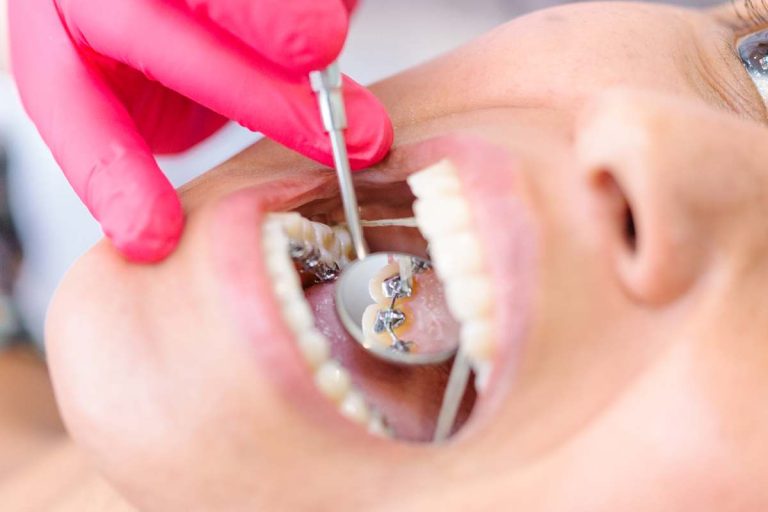In 2025, the push for consistent user experiences across platforms demands unified testing that ensures quality without added complexity. Windows, once tested in isolation, is now part of cross-platform pipelines, enabled by Windows emulator tech and modern frameworks like WinUI, .NET MAUI, and PWAs.
Windows emulators now support scalable automated testing, making them viable for CI/CD pipelines. Paired with cross-platform tools and cloud infrastructure, they help QA teams run parallel tests and catch issues early.
Table of Contents
What is Cross-Platform Testing?
Cross-platform testing involves checking the function and performance of the application on different platforms, from different operating systems (iOS, Android, Windows, macOS, and Linux), browsers (Chrome, Safari, Edge, Firefox), to devices (smartphones, tablets, desktops from different brands).
It seeks to confirm that the application provides a consistent user experience regardless of the platform used. This type of testing focuses on some of the key aspects of an application, including usability, functionality, and user interface, under diverse environments.
Why Do Windows Emulators Matter In Cross-Platform Testing?
Windows emulators are especially crucial in cross-platform testing because they enable development teams to fully test their applications on numerous Windows versions. This is done without having to install several physical machines. This flexibility is particularly useful in guaranteeing that applications developed with cross-platform frameworks such as Electron, Xamarin, .NET MAUI, or Flutter function similarly across different environments.
Emulators assist in identifying and fixing operating system-specific issues like UI rendering bugs, compatibility issues with system APIs, or performance differences that may not be observed on other platforms. They also enable the testing of edge cases and system behaviors that may be hard to manually reproduce, such as certain screen resolutions, hardware combinations, or legacy system limitations.
Key Features of Modern Windows Emulators (2025 Landscape)
- Enhanced performance and speed. This allows Windows emulators to operate with near-native execution, greatly improving testing efficiency.
- Seamless integration with developer tools like Visual Studio. This enables real-time debugging and performance analysis.
- Windows emulators now support multiple versions, including legacy systems and preview builds, for comprehensive compatibility testing.
- Provide built-in simulation for networking conditions and hardware sensors, allowing realistic testing scenarios.
- The snapshot and rollback functionality enables testers to save emulator states and revert as needed during debugging.
- Provide containerized and isolated environments to ensure consistent test setups and reduce environment-related issues.
- Cross-platform support allows emulators to run on macOS, Linux, and cloud platforms for team flexibility.
- AI-enhanced features help identify UI changes, accessibility concerns, and potential issues more intelligently.
Cross-Platform Testing Tools for 2025
Some top cross-platform testing tools for 2025 are listed below:
LambdaTest: LambdaTest is an AI-powered test execution platform that lets you run manual and automated tests at scale across 3000+ browser and OS combinations.
Its strength in Windows emulation and cross-browser testing lies in the ability to simulate real-world scenarios with precision. For teams focused on Windows compatibility, LambdaTest offers flexible testing across different versions and configurations, including the ability to emulate Safari for Windows without needing local VMs or physical device setups.
Its seamless integration with modern DevOps pipelines enables concurrent test runs on multiple Windows environments, reducing the testing timeframe considerably. The platform also provides powerful debugging features like network logs, video recording, and console output, which prove most beneficial in the isolation of OS-related problems that most probably remain undetected in local development environments.
Wine: Wine is a compatibility layer for open-source software that enables Windows programs to be run on Unix-like operating systems like Linux and macOS. Instead of a virtual machine or emulator implementation of internal Windows logic emulation, Wine on the fly converts Windows API calls into POSIX calls to enhance performance and decrease overhead. It works at its best with older or well-supported applications, but its compatibility could vary with the software.
CrossOver: CrossOver is a commercial version of Wine, created by CodeWeavers, with improved compatibility and an easier user interface. It comes with technical support and seeks to make installing and running Windows applications on macOS, Linux, and ChromeOS easier. CrossOver is used most by users who require professional assistance or an enhanced out-of-the-box experience.
VirtualBox: VirtualBox is a free and open-source virtualization software by Oracle that allows users to run multiple operating systems at the same time on a single machine. VirtualBox supports Windows, macOS, Linux, and other operating systems as a host OS and also as a guest OS. While it is more resource-intensive than Wine, VirtualBox is perfect for those who require a full Windows environment and would like to install applications in a dedicated virtual machine.
TestingBot: This is a cloud-based software that permits developers and testers to carry out manual and automated tests on numerous operating systems and browsers. It imitates the behaviour of users, examines bugs, and verifies that applications perform perfectly in different circumstances.
It supports popular testing frameworks like Selenium, Appium, Cypress etc, promoting comprehensive application testing without local installation. Bots can mimic attacks to test the safety features of a web application.
Techniques for Seamless Cross-Platform Testing with Windows Emulators
Mentioned below are some techniques for seamless cross-platform testing with Windows emulators:
- Parallel Emulator Booting: CI/CD performance can suffer when emulators take significant time to boot. To mitigate this, emulators should be launched in parallel across multiple jobs or containers, reducing overall wait time. Tools like Gradle or test orchestrators can be configured to spread tests across multiple emulator instances.
Additionally, cloud-based services like Firebase Test Lab offer scalable infrastructure where emulators are ready to be instantiated quickly in parallel, enabling faster feedback cycles without the overhead of maintaining local virtual device infrastructure.
- Cloud-based Emulator Services: Cloud-based device testing services such as Firebase Test Lab, AWS Device Farm, and LambdaTest provide scalable, on-demand access to a wide variety of emulators and real devices. These services handle the complexities of device management and can be triggered from CI pipelines using APIs or CLI tools. By integrating with these services, teams can run large test matrices across different OS versions and hardware profiles without investing in and maintaining a dedicated device lab.
- CI Configuration Tips: Each CI/CD platform has specific configurations for emulator support. For instance, GitHub Actions requires Android SDK setup and AVD creation within the job configuration. GitLab CI and Jenkins similarly require runners to be equipped with virtualization support and may benefit from using pre-configured runners with Android or iOS build tools installed. Reusing caches for SDK packages and system images can save time during setup, while CI scripts should handle emulator launch, readiness checking, and test execution robustly.
- Monitoring and Logging: Thorough logging and monitoring are essential for diagnosing test failures, especially when they occur intermittently. Tools like Logcat for Android or simulator logs for iOS can be captured and archived during test runs. These logs, along with screenshots and crash reports, should be uploaded as build artifacts for review.
- Test Flakiness Mitigation: Running tests on emulators often leads to flakiness due to timing issues, race conditions, or emulator instability. To reduce this, pipelines should include retry mechanisms for flaky tests and integrate test stabilization techniques such as mocking external dependencies.
Unit and integration tests should be separated from UI tests where possible, as the latter are more prone to environmental inconsistencies. Identifying and isolating flaky tests helps maintain the credibility of the CI process and reduces false negatives.
Additional Tips for Seamless Cross-Platform Testing with Windows Emulators
The following are the best practices for cross-platform QA with emulators targeting efficiency, reliability, and maintainability while testing on Android, iOS, and other platforms:
- Use Cross-Platform Testing Frameworks- Use testing frameworks that have cross-platform support, including Appium, Detox, Flutter Integration Test, or Xamarin.UITest. These enable the QA team to have one codebase for UI tests that may run against Android and iOS emulators. Selecting the proper framework makes setup easy and allows for parallel execution that is easier across devices.
- Test on a Matrix of OS Versions and Devices- Create a test matrix that spans several OS versions, screen sizes, and device setups. This is useful for revealing compatibility problems that occur only on specific combinations. Utilize cloud-based testing systems such as Firebase Test Lab or AWS Device Farm to test with a large variety of virtual devices without having to host them internally.
- Simulate Real-World Scenarios- Emulators can simulate different device states such as poor network conditions, low battery, GPS locations, or incoming calls. Utilize these features to test how the app behaves in adverse or edge-case scenarios. This improves overall app reliability by identifying problems users may encounter in real environments.
- Parallelize Testing to Reduce Execution Time- Run tests in parallel across multiple emulators and platforms to shorten feedback cycles and optimize resource utilization. Modern CI systems support concurrent job execution, and testing tools often support sharding or distributing test cases. This is crucial for large test suites and frequent code changes.
- Consistently Monitor and Log Emulator Behavior- Collect detailed logs, screen recordings, and screenshots for test failures across platforms. This data is vital for diagnosing issues, especially when tests are flaky or fail under specific conditions. Store artifacts as part of the CI process for easy access and traceability.
- Continuously Maintain and Review Test Suites- Regularly update and refactor test cases to reflect UI or behavior changes in the application. Remove obsolete tests and consolidate similar ones to reduce test maintenance costs. A disciplined review process ensures your test suite remains relevant, efficient, and valuable across platforms.
Conclusion
In conclusion, seamless cross-platform testing with Windows emulators is achievable as well as a necessity in 2025 to deploy high-quality applications on any device. With today’s advanced tools, automation frameworks, and CI/CD integration, QA teams can effectively test Windows apps along with Android and iOS alternatives. With the above tools and techniques, organizations can guarantee even performance, eliminate testing overheads, and expedite release cycles across platforms.










